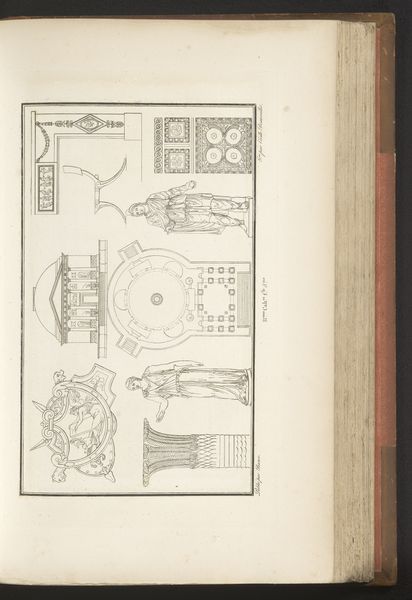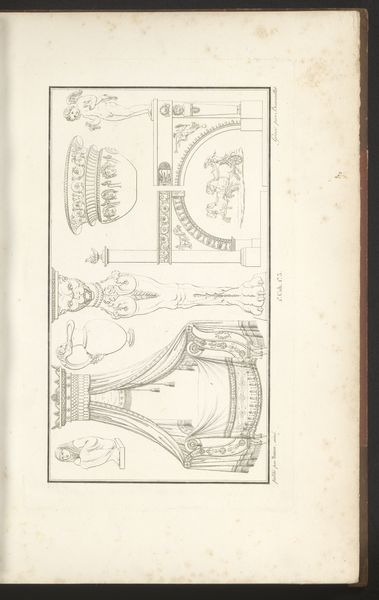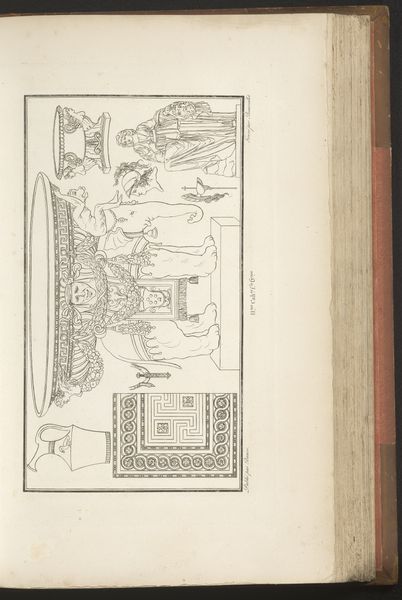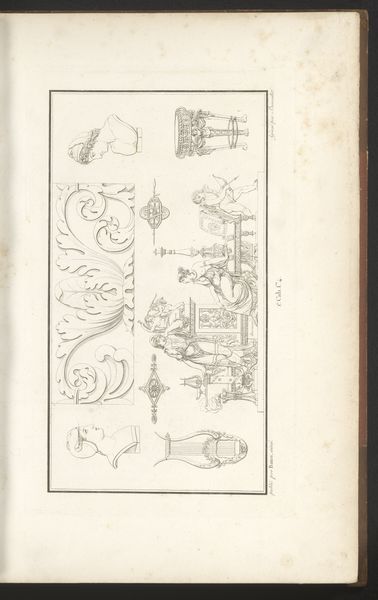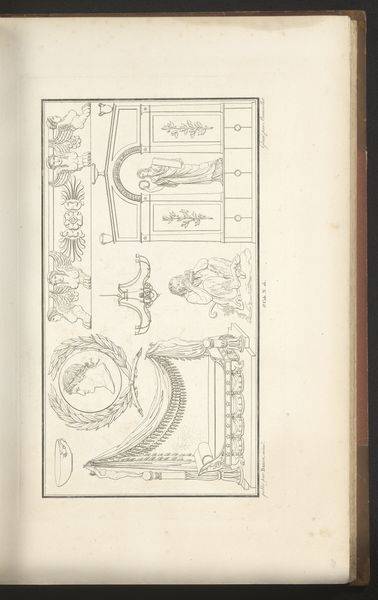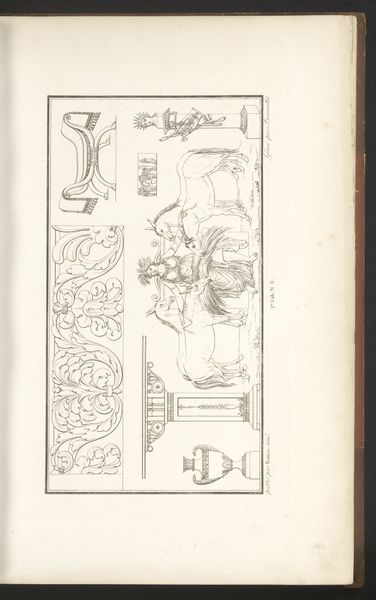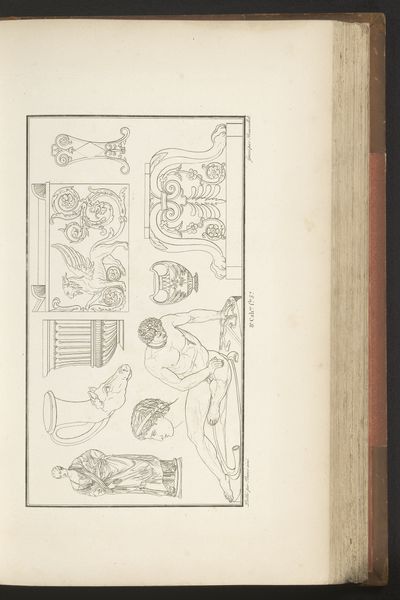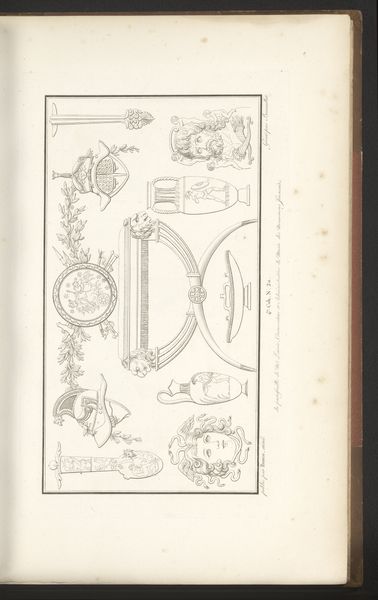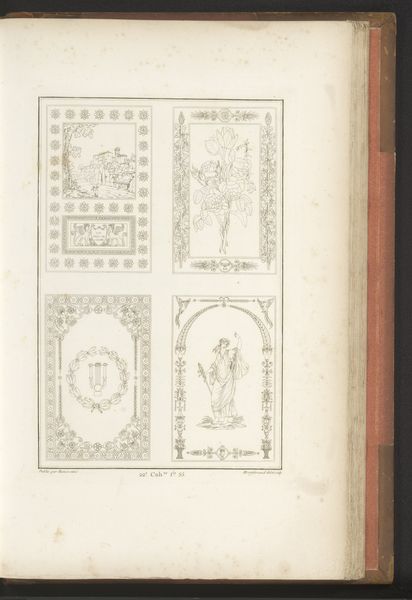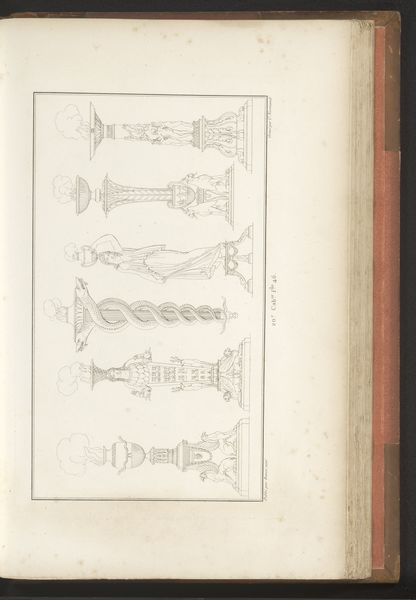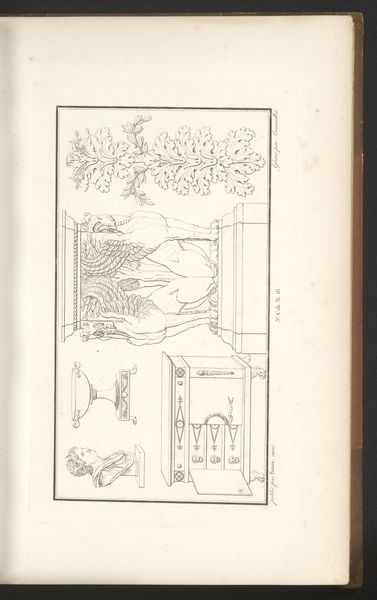
drawing, ornament, paper, ink, engraving
#
portrait
#
drawing
#
neoclacissism
#
ornament
#
classical-realism
#
paper
#
form
#
ink
#
geometric
#
line
#
engraving
Dimensions: height mm, width mm
Copyright: Rijks Museum: Open Domain
Curator: Take a moment to examine this engraving, titled "Verschillende ornamenten," or "Various Ornaments." Pierre-Nicolas Beauvallet rendered it around 1820, using ink on paper to display an array of architectural details. Editor: Immediately, I see a study in form, the neoclassical obsession with clean lines. The light ink creates a feeling of airy, almost utopian precision. Curator: Exactly. Beauvallet's piece encapsulates the Neoclassical fascination with ancient aesthetics, mirroring the era's emphasis on order and rationality that arose with revolutions in America and France. We're witnessing a direct artistic response. Editor: It's like a catalog of symbols. I spot motifs from Roman and Greek cultures. Those reclining figures evoke a sense of languid power, a reminder of the strength and intellect valued during both eras. Curator: Right, and let’s consider the societal role. Architectural drawing like this acted almost like instruction manuals. Engravings were the internet of the 19th century, enabling designs to be disseminated and copied throughout the world. Editor: A standardization of symbolic language, in a way! Neoclassicism wasn’t just about aesthetics; it projected a sense of moral rectitude. The revival of those earlier forms carries the weight of bygone empires. Curator: True, these aren’t just pleasantries; they reflect the desire to re-establish principles of political legitimacy, using symbols to visually encode the values and virtues that aligned with newly established orders in places like post-Revolution France. Editor: So viewing these engravings, we are looking at a record that influenced building practices and thus became part of everyday consciousness for much of the Western world at the time. It is a cultural carrier as much as it is art. Curator: Yes, Beauvallet was working within—and propagating—a highly codified visual language. I think it shows us how artwork functioned as a sort of visual syllabus for disseminating ideas and constructing civic identity. Editor: Agreed. Thinking about those persistent forms… what endures in collective imagination and how cultures consistently negotiate the same core visual motifs across time. Thank you for highlighting all that, that really clarifies my initial impression.
Comments
No comments
Be the first to comment and join the conversation on the ultimate creative platform.
